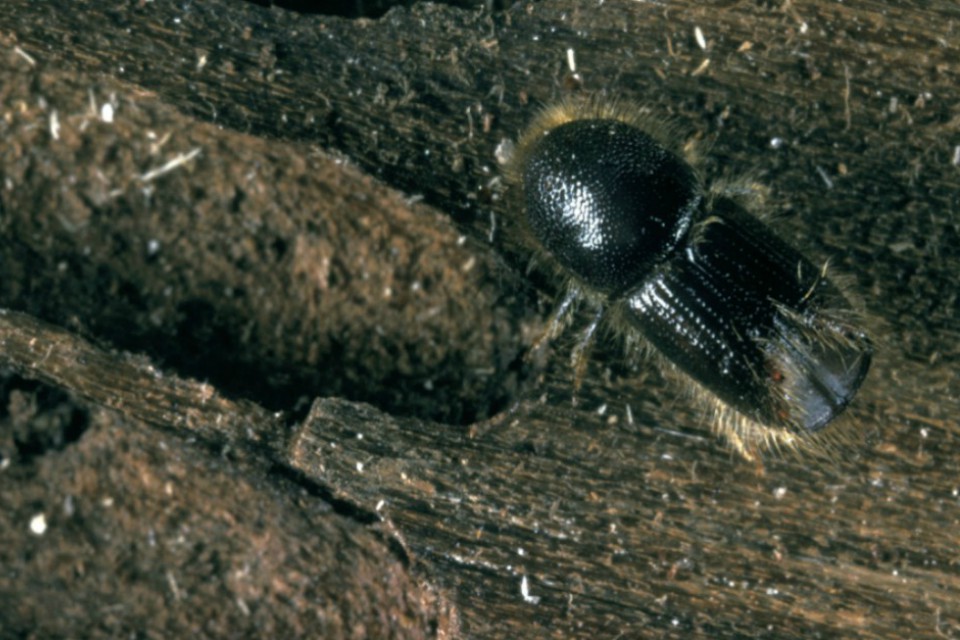Forestry Commission

class="gem-c-govspeak govuk-govspeak govuk-!-margin-bottom-0">
Latest news
Introduction of a prohibition on spruce planting in the Ips typographus demarcated area
The Forestry Commission has announced the introduction of an additional control measure for the current Ips typographus demarcated area. A revised notice Notice 7 (2024) implementing a prohibition on the planting of spruce trees came into force on29 October 2024 across the demarcated area (DMA) in the south-east of England and East Anglia. This is to prevent potential spread of the pest in line with the eradication action weve taken to manage outbreaks.
This prohibition restricts the planting of any spruce trees (of the genus Picea A. Dietr.) unless under the specified circumstances listed within .
Authorisation to plant spruce outside the scope of the specified exemptions may be granted in writing by the Forestry Commission. Read the latest news announcement.
If you grow spruce in the following industries, read the guide on exemptions and what you need to do:
- Christmas tree growers
- arboretums
- landscapers and private residents
- nurseries
- foresters
Landowners should continue to check the health of spruce trees on their land, identifying stressed, fallen, and snapped trees, and taking action to remove them and any surrounding susceptible material.
The video, Beat the Beetle, explains the threat of Ips typographus on spruce trees, and gives advice on how woodland owners can help reduce the risk from this pest.
Watch the video: Beat the Beetle.
Action required: remove storm damaged trees
All landowners, managers and timber processors should remain vigilant for Ips typographus. It is important to continue taking the necessary action to rapidly remove storm damaged trees in the demarcated area.
With storm damage previously reported across England following storms Isha and Jocelyn and Kathleen in 2024, spruce trees that have fallen or snapped significantly increases the chances of Ips typographus occurring in spring/summer if another flight occurs from the continent. We recommend that spruce continue to be walked, with fallen or snapped trees identified and destroyed where possible.
Ips typographus feeds on live but significantly weakened trees, with snapped stems down to 8cm diameter being a key target. These trees will have lower resin pressure as they cant draw water up from the roots, which weakens their ability to repel Ips attacks. Trees that have been pushed over but are leaning or hung up with roots still largely intact, are not a significant risk, as they can still draw water. Older, dead trees are not a risk for establishment.
Chipping or burning are suitable methods of destruction, but if this is not possible, the wood can be sawn, dragged into a pile, and covered with a weighed down tarpaulin with the edges tucked in and weighed down. This will speed up the rotting process, rendering material unsuitable in time.
Any woodland owner, manager or timber processor in the , requires authorisation to remove and transport damaged trees for processing. Please see details below on how to request a movement authorisation inspection, or email ipstypographus.authorisation@forestrycommission.gov.uk for further information.

Eight-toothed spruce bark beetle (Ips typographus)
Overview
The eight-toothed spruce bark beetle (Ips typographus) is considered a serious pest on spruce in Europe and has recently been found in the wider environment in England as part of routine plant health surveillance activity.
The beetle is mainly a secondary pest, preferring stressed or weakened trees. However, under the right environmental conditions, beetle numbers can increase enough to result in attacks on healthy trees.
If left uncontrolled, the beetle, in association with pathogenic fungi (particularly the blue stain fungus Endoconidiophora polonica), has the potential to cause significant damage to Britains spruce-based forestry and timber industries.
There is no evidence that Ips typographus is spreading in England - the latest establishments are likely to have come directly from the continent and are not related to the original 2018 finding.
Symptoms
Adult beetles are dormant and hibernate over winter under the bark of trees, logs and leaf litter. They then re-emerge in spring, when the temperature rises above 20C.
The beetle prefers stressed or weakened trees e.g. windblown, damaged and recently felled spruce trees, where, under the right environmental conditions, beetle numbers can increase. Inspection of trees in this category should be a priority.
Also look for standing individual and groups of dead trees. This arises when the beetles mass attack trees, overcoming the trees usual defences by a combination of large numbers and blue stain fungus carried by adult beetles. Under the right environmental conditions, this phase can lead to extensive tree deaths.
Adult females lay eggs along a linear gallery system from which larval galleries radiate, becoming wider as the larvae grow. The pattern shows in the bark and in the surface of the wood, and is unique to Ips typographus. This symptom should be looked for in any dead trees, whether standing or fallen.
The eight-toothed spruce bark beetle (Ips typographus) can often be confused with the great spruce bark beetle (Dendroctonus micans). Read the to help with identification.
Reporting sightings
Please remain vigilant for signs of Ips typographus. If you think you have spotted signs of this beetle anywhere in Great Britain then please tell us using our Tree Alert form. You can also submit a tree alert form if your spruce woodland is exhibiting signs of decline or stress, and we may arrange for a follow up inspection.
Report suspected sightings in Northern Ireland using Treecheck, the all-Ireland tree pest reporting tool.
Restrictions and prohibitions in the demarcated area
To protect the country against this pest, under powers conferred by The Official Controls (Plant Health and Genetically Modified Organisms) (England) Regulations 2019, the Forestry Commission introduced a notice to demarcate an area around the confirmed outbreak sites. This is to restrict:
- the planting of spruce trees
- the felling, stacking and movement of spruce material
- the movement and methods of forest operations
